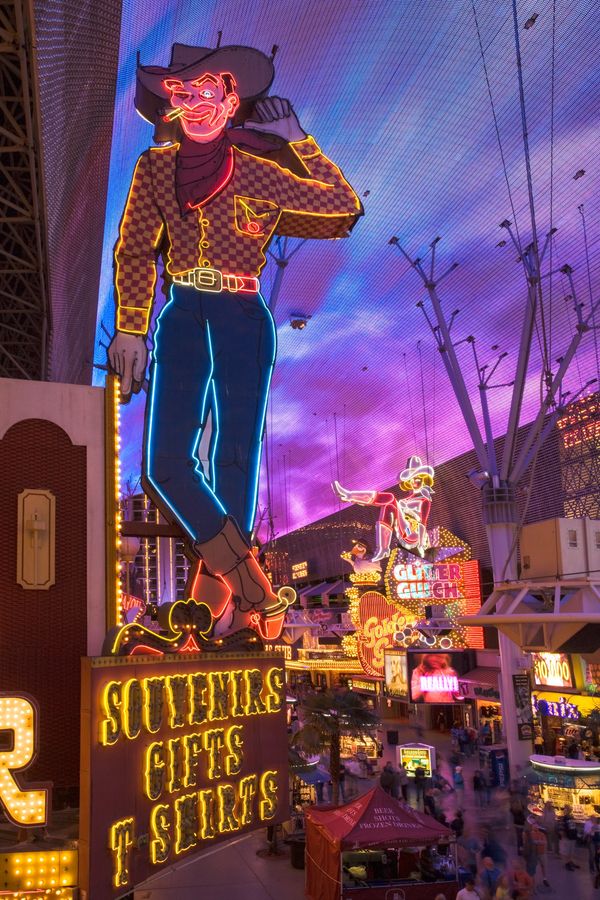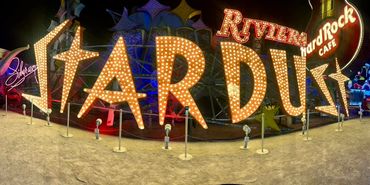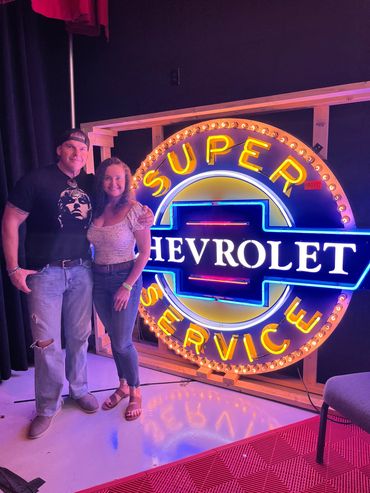Signed in as:
filler@godaddy.com
Signed in as:
filler@godaddy.com
Neon signs were originally created by French chemist and engineer Georges Claude and first introduced at the Paris Motor Show in 1910, beginning the significance of neon in car culture. Neon signs rose to popularity in America in the mid-20th century, particularly from the 1920's through the 1960's.

The artistry of neon signs lies in the intricate balance between craftsmanship, creativity, and technical skill. Each neon sign is handcrafted by skilled artisans, making them unique works of art. Beyond the technical aspect these artisans are designers. They must consider the overall aesthetic impact of the sign reflecting a combination of retro style, pop culture, and the visual identity of the brand or space they are created for.
Unlike mass-produced LED lights, every neon sign is handcrafted. This means no two signs are exactly alike, even if they follow the same design. The small imperfections and variations from one sign to the next contribute to their charm and uniqueness, much like traditional artwork. Each sign is a one-of-a-kind creation that carries a personal touch of each craftsman, harkening traditions of old.

The vibrant, glowing colors of neon signs are instantly recognizable and create a warm, inviting ambiance. The soft, warm glow and unique hues (especially neon pinks, blues and greens) are distinct from other types of lighting, giving them a timeless and artistic quality that people associate with the charm of the past.

Neon signs are often associated with classic diners, motels, bars, and theaters - places that hold a special place in American pop culture. These signs evoke imagery of classic movies, vintage postcards, and the golden age of advertising, enhancing their nostalgic appeal.
They are enduring symbols and have become iconic symbols of the places they represent, such as the famous "Welcome to Las Vegas" sign. These landmarks connect people to specific road trips, memories or experiences tied to those places fueling their nostalgia. For many, neon signs are a reminder of a bygone golden era in American history.
Anyone who has visited Las Vegas, New York, Nashville or traveled Route 66 can deny the feeling or atmosphere evoked by these neon lights.

Neon signs are made primarily of glass tubes, noble gases and electrodes, with each part playing a role in their iconic glow. Here is a breakdown of the materials:

ALL NEON SIGNS CARRIED AT KINMANN'S CLASSIC GAS ARE BOUGHT DIRECTLY THROUGH OUR ARTISANAL PARTNERS WITH OFFICIAL TRADEMARK LICENSING, AND COME WITH A ONE-YEAR MANUFACTURER WARRANTY DUE TO DEFECTS NOT CAUSED BY DAMAGE OR MISHANDLING.

One of our favorite "love" stories is that of Fremont Street's Iconic Vegas Vic and Vegas Vicki.
Vegas Vic is a neon sign depicting a waving cowboy with human-like qualities of talking and waving his arm, that was originally erected outside the Pioneer Club in Las Vegas, in 1951 and quickly became a mascot for Fremont Street. After the Pioneer Club closed in 1995 and years of disrepair occurred, Vegas Vic became owned by The Neon Sign Museum and The Fremont Street Experience. He has since been restored without animation and can be seen at 25 E Fremont Street.
Vegas Vick gets a girlfriend! Vegas Vickie, the iconic sassy kicking cowgirl, originally hung over the main entrance of the Glitter Gulch Casino, and was erected in 1980. Time eventually took its toll on Vegas Vickie as it does all good showgirls, and she had fallen into disrepair as the cost of her makeovers became increasingly costly and involved. The Glitter Gulch closed its doors in 2017, Vickie was taken down, and her future in Las Vegas and that with Vegas Vick was uncertain. Luckily for the love birds, Vicki was rescued by one of the newest Vegas casino's the Circa, which opened a few feet away from Vickie's original homeplace on Fremont Street. She can be seen in hanging in the indoor atrium of the circa next to "Vegas Vickie's Cocktail Lounge.
In true Vegas fashion, Vegas Vic and Vegas Vickie were officially"married" in a 1994 ceremony during the construction of the Fremont Street Experience.
That is a romance for the ages!






We use cookies to analyze website traffic and optimize your website experience. By accepting our use of cookies, your data will be aggregated with all other user data.